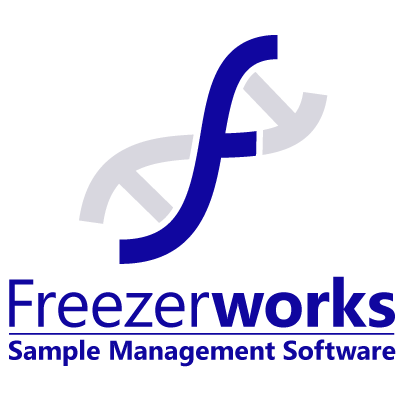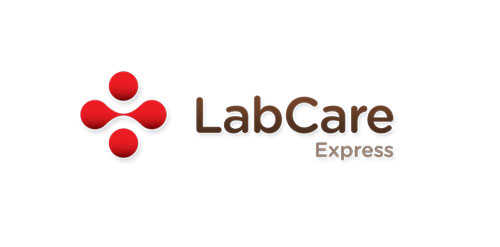Description

Dicatalyst

Freezerworks
Comprehensive Overview: Dicatalyst vs Freezerworks
Dicatalyst and Freezerworks are two distinct products often utilized in different domains. Here's a comprehensive overview of both:
Dicatalyst
a) Primary Functions and Target Markets:
- Primary Functions: Dicatalyst typically serves as a laboratory information management system (LIMS). It is designed to streamline laboratory operations, manage samples, track data, and automate workflows. Its functions include sample tracking, instrument integration, result management, regulatory compliance, and data analysis.
- Target Markets: Dicatalyst primarily targets laboratories and research facilities in sectors like pharmaceuticals, biotechnology, clinical research, and environmental science. It is suitable for organizations that require rigorous data management and compliance with industry standards.
b) Market Share and User Base:
- Dicatalyst, being a LIMS, competes with other major LIMS providers like LabWare, STARLIMS, and Thermo Fisher’s SampleManager. The market share of Dicatalyst is determined by its specialization and user preference for scalability, integration capabilities, and customization.
- The user base is represented primarily by labs seeking advanced technological solutions to streamline their operations and improve efficiency in data handling.
c) Key Differentiating Factors:
- Customization: Dicatalyst offers a high level of customization, allowing organizations to tailor the system to specific workflows.
- Integration Capabilities: It provides strong integration capabilities with laboratory instruments and other software systems, facilitating seamless data flow.
- Compliance and Security: Emphasizes regulatory compliance and data security, making it suitable for heavily regulated industries.
Freezerworks
a) Primary Functions and Target Markets:
- Primary Functions: Freezerworks is a specialized software solution focused on sample management, particularly in terms of inventory tracking, sample storage, and retrieval. It excels in managing large-scale sample datasets, ensuring accurate tracking, and auditing.
- Target Markets: Freezerworks primarily caters to biobanks, clinical research laboratories, hospitals, and academic research institutions. It is ideal for organizations that require meticulous sample management and tracking.
b) Market Share and User Base:
- Freezerworks operates in a niche market focused on biobanking and sample management solutions. It competes with other sample management software providers like LabKey and Nautilus.
- The user base consists mostly of institutions and organizations handling extensive and diverse sample inventories requiring precise management and tracking solutions.
c) Key Differentiating Factors:
- Specialization in Sample Management: Freezerworks is highly specialized in sample inventory and biobanking, offering features specifically tailored for these needs.
- User-friendly Interface: It is known for its intuitive interface, which simplifies the process of sample tracking and reduces the learning curve for users.
- Scalability: Freezerworks can scale with the growing inventory needs of institutions, making it adaptable for both small and large operations.
In summary, Dicatalyst and Freezerworks serve different purposes within laboratory and research operations. Dicatalyst is a comprehensive LIMS solution with a broad functionality scope designed for complex data handling and compliance, while Freezerworks focuses on the niche market of sample management with emphasis on ease of use and specialization in biobanking. Their market share and user base reflect their distinct market focuses and strengths in addressing specific operational needs.
Contact Info

Year founded :
2017
Not Available
Not Available
India
http://www.linkedin.com/company/dicatalyst

Year founded :
Not Available
Not Available
Not Available
Not Available
Not Available
Feature Similarity Breakdown: Dicatalyst, Freezerworks
When comparing Dicatalyst and Freezerworks, both of which are laboratory information management systems (LIMS), it's important to analyze their core features, user interfaces, and unique offerings. Here's a breakdown based on typical features of LIMS software:
a) Common Core Features
-
Sample Management: Both Dicatalyst and Freezerworks offer comprehensive sample management capabilities. This includes tracking, categorization, and organization of samples in the laboratory.
-
Data Management: They provide robust data management functionalities, allowing users to store, retrieve, and manage large volumes of data related to samples, experiments, and results.
-
Inventory Management: Each system supports inventory tracking and management, ensuring that lab supplies and reagents are logged and monitored efficiently.
-
Reporting and Analysis: Both platforms offer reporting tools that facilitate data analysis and generation of customizable reports.
-
Compliance and Security: They are designed to support regulatory compliance (such as FDA, CLIA) and ensure data security and integrity.
b) User Interface Comparison
-
Dicatalyst:
- Typically focuses on a user-friendly interface tailored for flexibility and ease of customization.
- Its design may emphasize modular capabilities, allowing users to add or customize modules as per specific laboratory needs.
- Often caters to a visually intuitive experience, with drag-and-drop features and dashboards.
-
Freezerworks:
- Known for a straightforward, no-nonsense interface that prioritizes function over form.
- It might focus more on providing direct access to features without extensive customization options out of the box.
- Utilizes a grid-based view that helps in quickly navigating through sample data.
c) Unique Features
-
Dicatalyst:
- May offer advanced integration capabilities with other laboratory systems and IoT devices, enhancing automation and data flow.
- Could include AI-driven analytics to provide predictive insights and recommendations.
- Often involves features that cater to industry-specific needs, such as clinical trials or pharmaceutical development.
-
Freezerworks:
- Its specialization in biobanking and sample storage solutions may make it unique, offering robust tools for managing large sample repositories.
- Known for customizable labeling and barcode generation specific to sample storage needs.
- Offers historical audit trails specific to sample management, which can be crucial for long-term sample storage facilities.
These distinctions, alongside their shared features, make Dicatalyst and Freezerworks versatile choices for laboratories, with each product fitting differently based on specific operational needs and user preferences. It's recommended for potential users to consider specific laboratory workflows and requirements when choosing between them.
Features

Not Available

Not Available
Best Fit Use Cases: Dicatalyst, Freezerworks
Dicatalyst and Freezerworks are both specialized software solutions catering to different niches within data management and laboratory operations. Here's a detailed look at their best fit use cases:
a) Dicatalyst:
Types of Businesses or Projects:
- Small to Medium Enterprises (SMEs): Businesses that need a platform for digital transformation with a focus on collaboration and process optimization.
- Consulting Firms: Companies looking for efficient project management and client collaboration tools.
- Startups: Particularly tech startups that require scalable solutions for process management and team collaboration.
- Educational Institutions: Schools and universities aiming to incorporate effective tools for administrative efficiency and resource management.
Use Cases:
- Project Management: Organizations needing robust tools to manage tasks, timelines, and deliverables effectively.
- Collaboration and Communication: Teams that prioritize seamless collaboration and require functionalities like shared workspaces and real-time communication.
- Process Automation: Businesses looking to automate routine workflows to enhance productivity and reduce manual errors.
b) Freezerworks:
Preferred Scenarios:
- Biobanks and Biorepositories: Facilities needing detailed tracking and management of biological samples over time.
- Research Laboratories: Labs requiring meticulous record-keeping and compliance with regulatory standards for sample storage.
- Clinical Trials: CROs and pharmaceutical companies that need precise sample tracking and data integrity during studies.
- Hospitals and Medical Centers: Institutions managing a large volume of specimens for analysis and research purposes.
Use Cases:
- Sample Tracking and Management: Essential for organizations that need to maintain an accurate inventory of biological and chemical samples.
- Compliance and Reporting: Ideal for settings requiring adherence to strict regulatory standards and detailed reporting capabilities.
- Data Integrity and Security: Businesses with critical needs for secure and reliable data management solutions to protect sensitive information.
d) Industry Verticals and Company Sizes:
Dicatalyst:
- Industry Verticals: Technology, education, consulting, and any sector that emphasizes operational efficiency and digital collaboration.
- Company Sizes: Best suited for SMEs and startups due to its scalable nature and focus on enhancing productivity and collaboration without needing extensive IT resources.
Freezerworks:
- Industry Verticals: Primarily life sciences, healthcare, pharmaceuticals, and any laboratory-centric environments.
- Company Sizes: Scales well across small research labs to large biobanks and pharmaceutical companies, thanks to its robust sample management and compliance features.
Both Dicatalyst and Freezerworks serve distinct purposes and industries, ensuring that organizations can choose the one that aligns best with their operational needs and industry requirements.
Pricing

Pricing Not Available

Pricing Not Available
Metrics History
Metrics History
Comparing teamSize across companies
Conclusion & Final Verdict: Dicatalyst vs Freezerworks
Conclusion and Final Verdict for Dicatalyst vs. Freezerworks:
When comparing Dicatalyst and Freezerworks, the decision depends heavily on specific user needs, organizational requirements, and budget constraints. Both platforms offer unique features that cater to different aspects of data management, particularly in research and laboratory environments.
a) Considering all factors, which product offers the best overall value?
Determining the best overall value depends on the user's specific priorities. However, generally:
-
Freezerworks tends to provide a more robust solution for laboratories needing comprehensive data management and sample tracking. It is known for its user-friendly interface and exceptional support for biobanking and laboratory environments. This makes it particularly valuable for organizations that prioritize comprehensive sample management and regulatory compliance.
-
Dicatalyst, on the other hand, is typically favored by organizations looking for a more customizable and scalable solution. It excels in integrations and adaptability to various business processes, providing flexibility that can be highly valuable in dynamic research environments.
Given these nuances, Freezerworks may offer the best overall value for traditional laboratory settings with a strong emphasis on sample management. In contrast, Dicatalyst could be the better value for organizations seeking flexibility and scalability in data management solutions.
b) What are the pros and cons of choosing each of these products?
Dicatalyst:
Pros:
- High degree of customization and scalability.
- Strong integration capabilities with various other systems and databases.
- Flexibility to tailor the platform to specific organizational needs.
Cons:
- May require significant setup and configuration efforts.
- Possibly more complex learning curve for users due to customization options.
- Initial costs could be higher depending on the level of customization needed.
Freezerworks:
Pros:
- Specifically designed for laboratory environments, offering excellent sample tracking.
- User-friendly interface with straightforward navigation.
- Strong emphasis on compliance and standard protocols.
Cons:
- Less flexible in customization compared to Dicatalyst.
- May not integrate as seamlessly with non-laboratory systems.
- Potentially limited in scaling beyond core laboratory functions.
c) Are there any specific recommendations for users trying to decide between Dicatalyst vs Freezerworks?
-
Assess Organizational Needs:
- If your organization has strict requirements around sample management and operates primarily within a lab setting, Freezerworks might be more suited to your needs.
- If your needs extend beyond the lab and you require a platform that can grow and adapt with a wide range of data management tasks, Dicatalyst may be a better option.
-
Consider Integration and Scalability:
- Dicatalyst is ideal for users who need their system to integrate with diverse applications and who anticipate the need for scalability.
- Opt for Freezerworks if integration beyond laboratory tools is not a primary concern.
-
Evaluate Budget and Resources:
- Understand your budget constraints. Dicatalyst could entail higher initial investment for customization.
- Freezerworks might offer a more off-the-shelf solution, potentially reducing long-term costs associated with system alterations.
-
User Experience and Training:
- Consider the usability and the level of training your team will require. If ease of use is paramount, Freezerworks could be more advantageous.
- Conversely, if your team is adept at handling complex systems, Dicatalyst’s versatility could provide substantial benefits.
Ultimately, the choice between Dicatalyst and Freezerworks should align with both current and anticipated future needs, the technological ecosystem, and the strategic objectives of the organization.
Add to compare
Add similar companies




